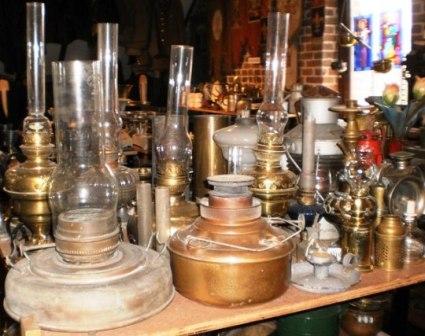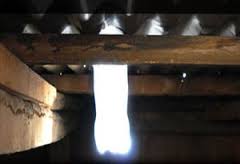A kerosene lamp gives light (and heat) by burning kerosene (or paraffin. Actually petroleum based material, but the terms are used interchangeably.) They followed up in 1859 the oil lamp. The lamp has a cotton stocking that is in the oil and which thus sucks up oil by capillary action. A piece of tubing can be rotated between an iron casing up or down, so that the flame burns larger or smaller.
 In 1783 the Frenchman Aimé Argand improved the burner. He used a flat piece of woven cotton between two copper tubes in a cylinder, a hollow wick. The supply of oxygen to the flame was thereby optimal. The lamp gave the light of twenty candles.
In 1783 the Frenchman Aimé Argand improved the burner. He used a flat piece of woven cotton between two copper tubes in a cylinder, a hollow wick. The supply of oxygen to the flame was thereby optimal. The lamp gave the light of twenty candles.
The lamp was further enhanced by the Frenchman Quinquet, who placed a chimney glass around the flame.
As a result, the air is compressed by a constriction, so that the oxygen penetrates even better to the flame.
As the temperature in the chimney glass becomes higher, the flame will also be larger. Note the color of the flame and turn the wick if needed a litle back.
A mantle contains some metallic oxides which when heated emit a lot of light in the visible spectrum, and low infrared. For this purpose, oxides of the lanthanides and chemically somewhat related actinides, such as cerium, and thorium are used. The wick consists of a network of synthetic fibers, saturated with these metal oxides. In the first heating the fibers burn away and remain a ”mesh” of metal left behind.
The light bulb did not originate from the continuous improvement of the candles.
Sunlight lamp
 In 2002, the Brazilian Alfredo Moser filled a PET bottle full of water and a few tablespoons of bleach (to prevent algae growth) and fitted it with waterproof resin in a corrugated iron roof. The half that protrudes above the roof catches sunlight, which is reflected in the lower half over 360 degrees. In closed houses and lofts, without electricity, you get so a lamp with a brightness of 40 to 60 watts.
In 2002, the Brazilian Alfredo Moser filled a PET bottle full of water and a few tablespoons of bleach (to prevent algae growth) and fitted it with waterproof resin in a corrugated iron roof. The half that protrudes above the roof catches sunlight, which is reflected in the lower half over 360 degrees. In closed houses and lofts, without electricity, you get so a lamp with a brightness of 40 to 60 watts.
The Filipino MyShelter Foundation has, like many other countries, copied the solar bottle bulb and spread further.
Light travels at a speed of 300 km / sec, it is strange that it does not even goes out at that speed.
